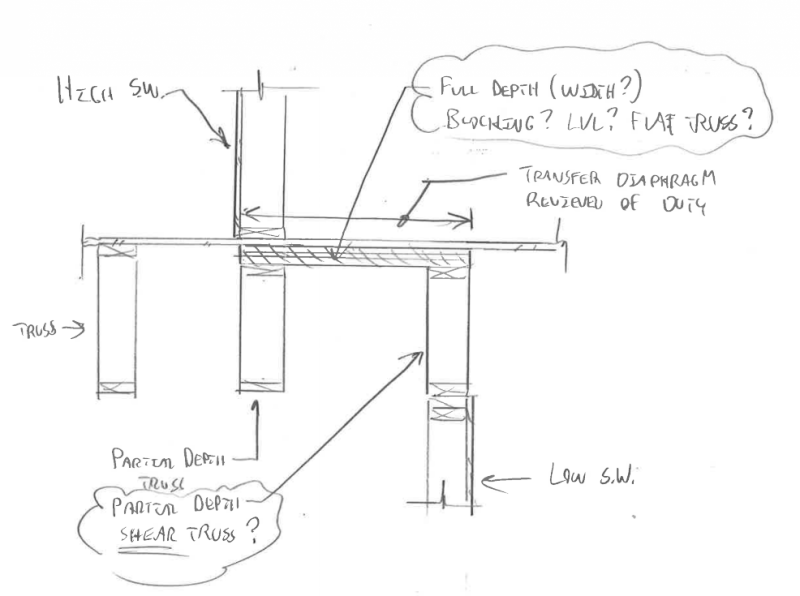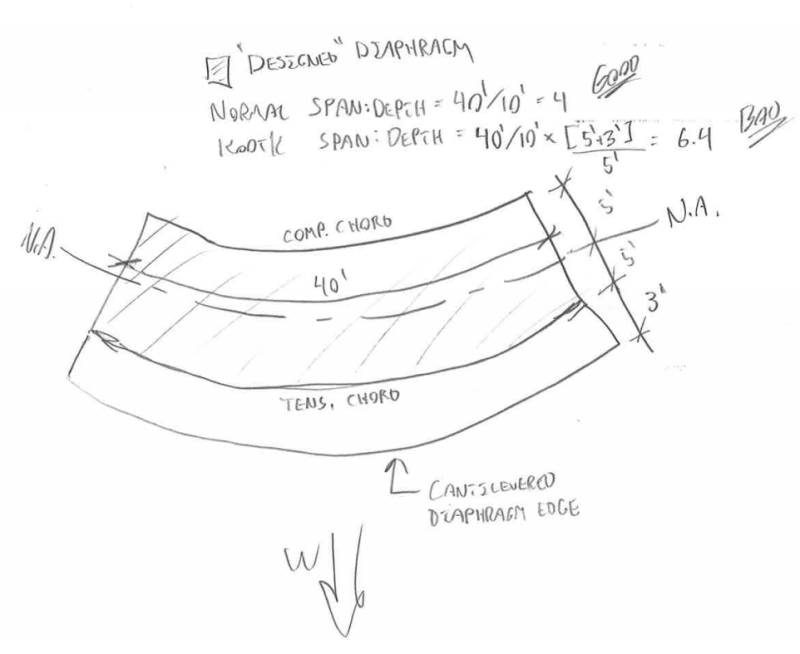I more or less agree with most of your satanic advocacy RFreund. To further promote the interests of goodness and light...
RF said:
If you utilize the masonry walls then you don't have much concern for the interior walls and coordinating all the plumbing locations.
Your demising wall will still likely be very important, heavily loaded bearing walls. It's not as though you'll be just turning a blind eye either way.
RF said:
You have a fewer areas of higher level detailing; could be tricky anchoring the wood walls to the concrete/precast podium floor slabs.
Firstly, I don't find that the higher level detailing required for the use of interior shear walls is all that bad. The walls are usually long and uninterrupted so things are manageable. I like it a whole lot better on a CIP podium than I do on precast however.
My second point is a bit frou-frou but I'll throw it out here anyhow. I don't feel that connection complexity varies linearly with load (C ><> L). Rather, I feel that it varies with some exponent of the load such as 1.5 or 2.0 (C ><> L ^ 1.5). This favors distributing load resistance throughout the building in my opinion. I feel that it will yield a more efficient solution, both in terms of construction cost and design effort. Distributing load resistance throughout a building also improves redundancy which is nice although not required in most instances.
RF said:
Is the masonry wall then a stand alone shaft? Or if not, how is it braced at each level? I suppose this is how you deal with my point 3 above. Is there another way to detail this area
Yes, yes, and almost certainly.
RF said:
Not sure what you mean here?
I have clients that have expressed concern over elevator vibrations telegraphing their way into the neighboring tenant spaces. I'm not sure how much truth there is to that. This obviously favors isolation.
Mike said:
I'm sure if you do the calculations, you will get that the wood diaphragm can be assumed as rigid
In my opinion, much depends on the details used at the partition walls. In my area, the sheathing won't be continuous. Instead, we'll transfer shear across with connector hardware. And, either way, the state of the union regarding chords in these kinds of buildings is sketchy at best. These issues, and others, make me quite skeptical of treating wood diaphragms as rigid. This, as you implied, is particularly the case in the transverse direction. I take comfort in the fact that, with a strong corridor wall and two strong demising walls, each unit could probably act as a stand alone three sided building if it had to. In fact, I suspect that may actually be the more realistic load path (three sided with some nominal capacity at the exterior).
I like to debate structural engineering theory -- a lot. If I challenge you on something, know that I'm doing so because I respect your opinion enough to either change it or adopt it.

![[ponder] [ponder] [ponder]](/data/assets/smilies/ponder.gif) . You masonry wall will be heavily loaded and get ready for some big foundations. I do like the idea of redundancy but I suppose you will get that to some degree even with only relying on the masonry.
. You masonry wall will be heavily loaded and get ready for some big foundations. I do like the idea of redundancy but I suppose you will get that to some degree even with only relying on the masonry.

